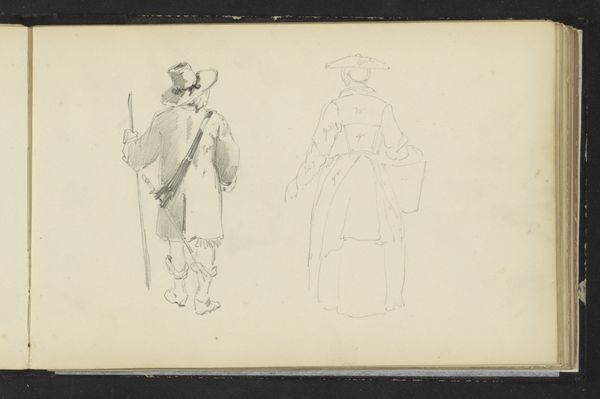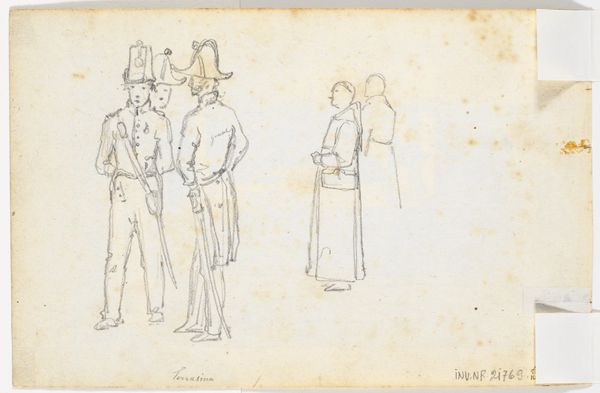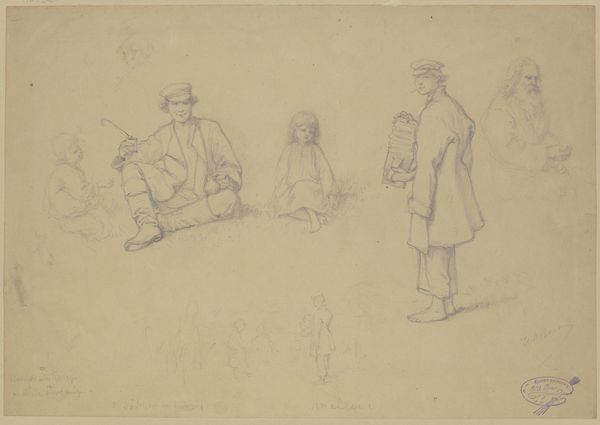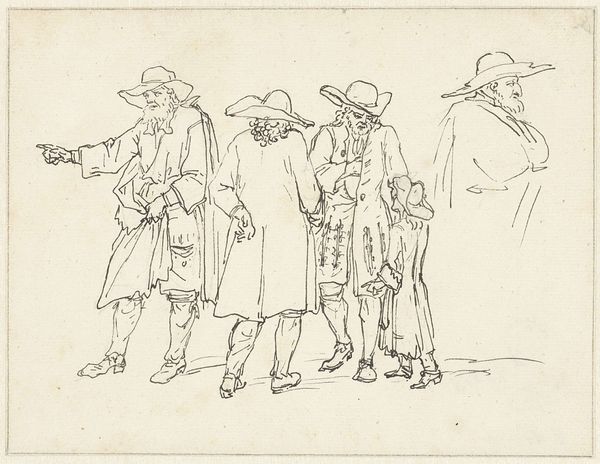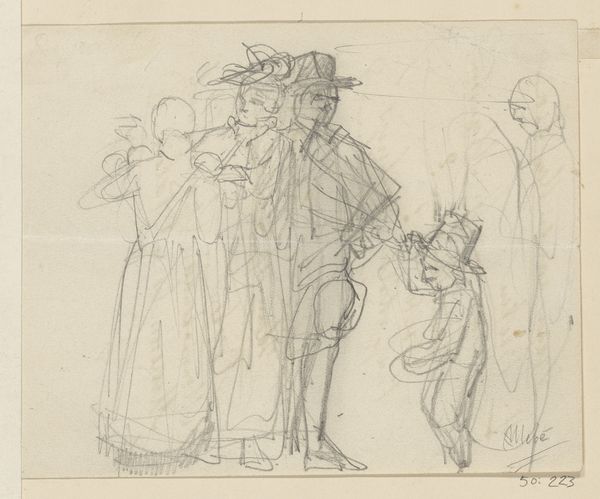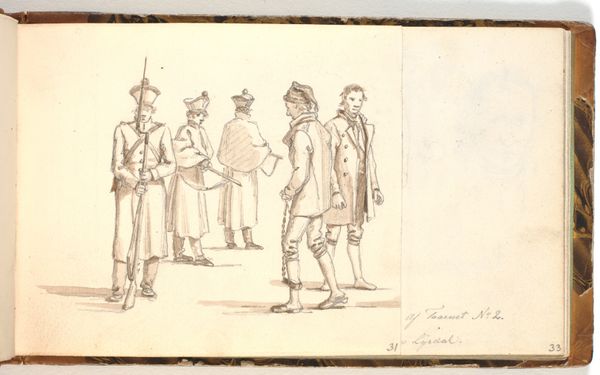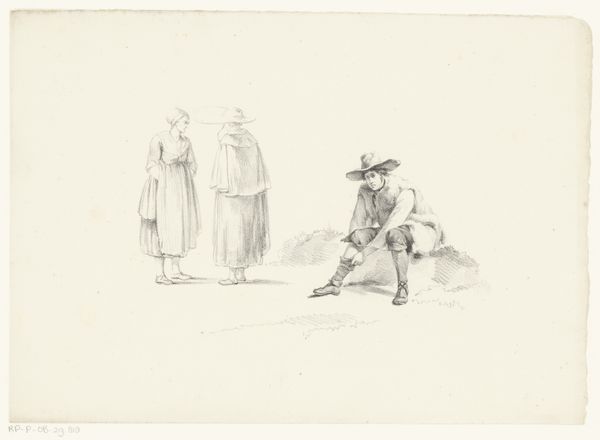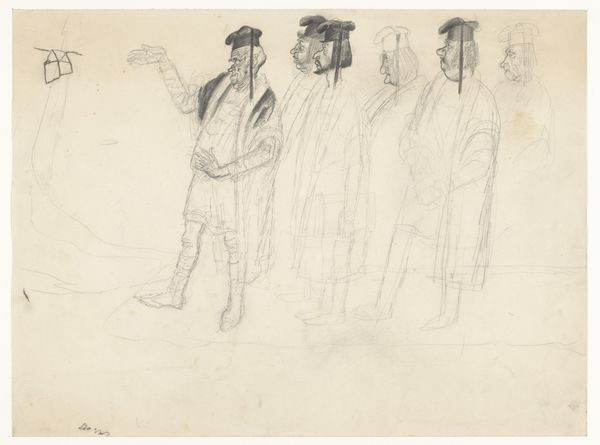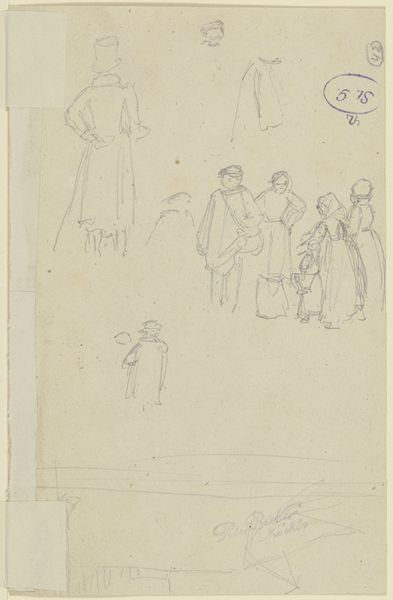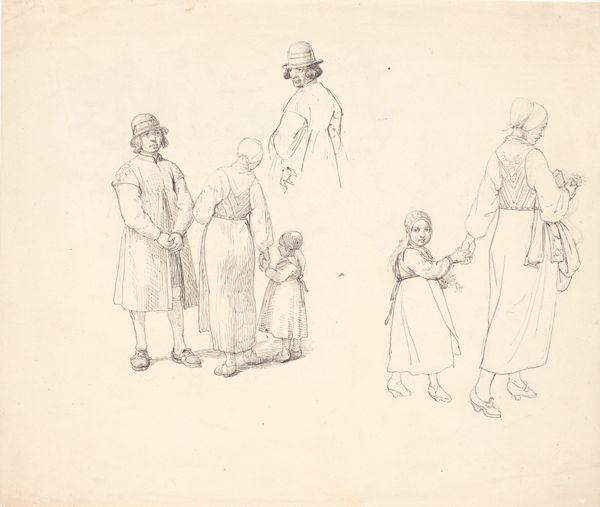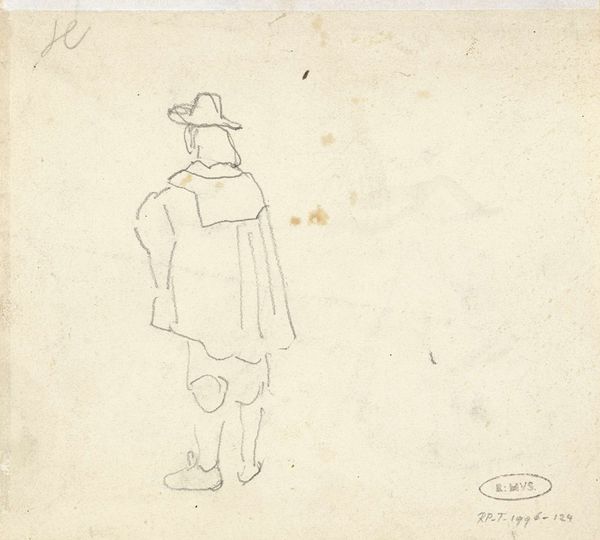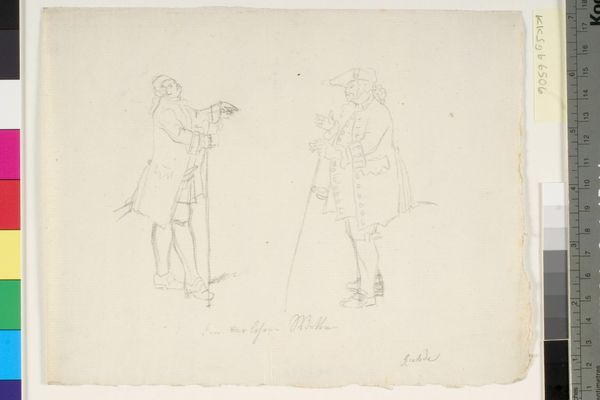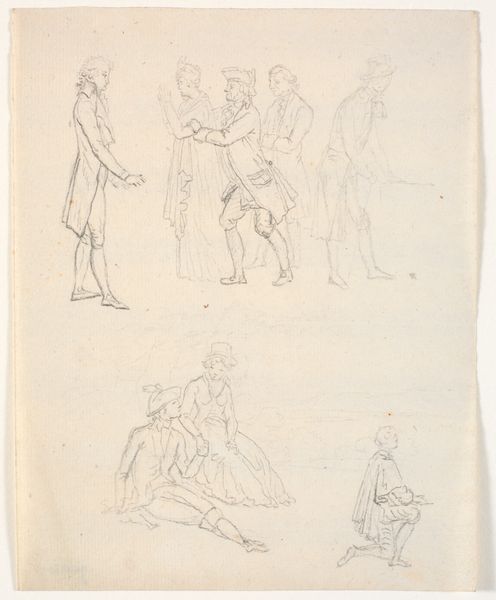
drawing, paper, pencil
#
portrait
#
drawing
#
amateur sketch
#
light pencil work
#
pencil sketch
#
incomplete sketchy
#
paper
#
idea generation sketch
#
sketchwork
#
character sketch
#
layout sketch
#
pencil
#
rough sketch
#
genre-painting
#
academic-art
#
initial sketch
Dimensions: 230 mm (height) x 303 mm (width) (bladmaal)
Curator: Before us is a pencil drawing titled "Dragtstudier," or "Costume Studies," created by Martinus Rørbye in 1834. It resides here at the SMK, the Statens Museum for Kunst. Editor: There’s a delicacy to it. Such light, airy strokes creating these figures. They feel almost translucent, like ghosts captured on the page. Curator: Rørbye was a prominent figure in the Danish Golden Age, and these sketches are likely preparatory studies for his genre paintings, where he often depicted scenes from his travels. You see several figures, each adorned in distinctive garments, likely studies of individuals he encountered on his journeys. Editor: The contrast in textures is intriguing. Notice how the hats, rendered with more defined lines, anchor the compositions. The clothing is fascinating too; observe the fluid drapery in comparison. The formal qualities of that cloak demand our attention. Curator: Indeed. And consider the context of these "costume studies". Rørbye, along with other artists, was contributing to a visual archive, of sorts, that fueled European orientalism. These sketches allowed him and his peers to categorize and interpret different cultures through their visual appearance. Editor: It seems somewhat detached. There's this distance created by the uniform lightness of the marks. The anonymity of the sketched lines emphasizes that what we’re truly looking at here, are costumes – devoid of true character and weight. Curator: But the precision and the meticulousness are still apparent. This piece gives insight into how European identities were being shaped in relation to the cultures they were observing and representing. How "otherness" was being visually constructed and understood within a specific historical and social context. Editor: The way those robes hang... it's not just informative. You can feel the soft give of cloth. Even incomplete, this communicates volume masterfully using only tone and line. Curator: Understanding the social function gives depth to those formal choices, I believe. Editor: A beautiful piece in its way. Certainly a useful starting point for appreciating how cultural details transform through the eye of an artist into an expressive form. Curator: Absolutely, and for recognizing that art always functions within—and reflects—a wider social and cultural web.
Comments
No comments
Be the first to comment and join the conversation on the ultimate creative platform.
